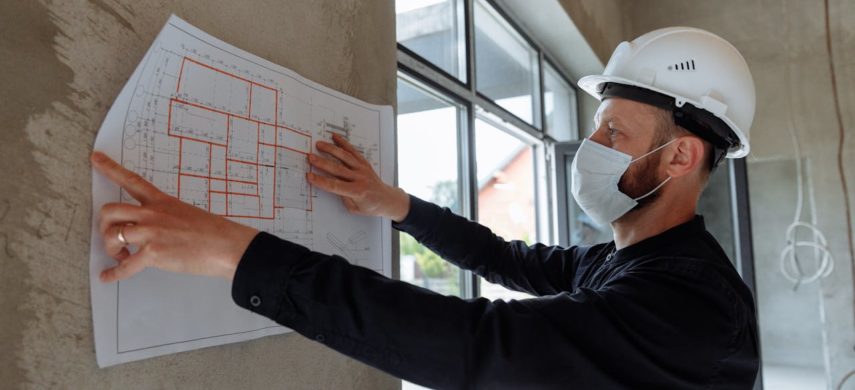
Whether you’re a general contractor, subcontractor, supplier, or design professional in Florida, you deserve to get paid for your significant skills. While the real estate industry is based on a lot of trust, it is unfortunately not guaranteed that those hiring you for a project will always follow through on their responsibilities to settle your invoices. The good news is that there are legal processes service providers can use to protect against the personal and business impacts of non-payment. A construction lien is one of these tools.
However, like any legal mechanism, construction liens must be used correctly and within the terms of Florida’s real estate statutes. So, let’s take a closer look at what they are and how to navigate them.
What is a Construction Lien?
In simple terms, a construction lien allows individuals or businesses who have contributed to a property’s construction or improvement to claim a percentage of ownership until they have been paid for the work. Also known as a mechanic’s lien, this legislation—outlined in Chapter 713 of the Florida statutes—makes it difficult for the developer to sell, refinance, or otherwise transfer the property without first dealing with the rightful claims of the relevant service providers. In some instances, liens can lead to property foreclosures to recover the debt.
Some useful things to know about construction liens:
They’re preventative – Liens are designed to avoid the necessity for lengthy and complex lawsuits by making it essential for developers to pay service providers’ bills before they can profit from the property.
They apply to “improvements to real property” – Liens can be issued when services or materials provided are used to make permanent changes to a property that impacts its value or functionality.
They must be correctly filed and served – In order to make a valid claim, providers must follow the correct procedures under Florida law for both arranging a lien and enforcing it.
Who Can File a Construction Lien?
Not everybody connected to a construction project is able to file a lien in Florida. However, the definition of potential lienors as outlined in Chapter 713.02 of the Florida statutes is relatively extensive. Some of the key roles of those who can file include:
| Title | Project Role |
|---|---|
| General contractor | Service provider working directly with or for the property owner. |
| Subcontractor | Service provider hired by a general contractor. |
| Material supplier | Individual or businesses furnishing items that were used in the project. |
| Laborer | Service provider performing physical work on the construction site. |
| Professional service provider | Architects, interior designers, engineers, and surveyors with a contract directly with the property owner. |
It’s also important to note that only fully licensed contractors are able to file liens in Florida. Regardless of whether the work was completed to a professional standard, those without proper licenses in place before a job starts are unable to file liens.
Issuing an NTO
In some instances, a Notice to Owner (NTO) must be issued. Effectively, this involves those who don’t have a direct contract with the property owner—such as subcontractors, laborers, and material providers—advising the owner or developer that they may file a lien if they don’t receive payment.
NTOs need to be sent within 45 days of the first provision of materials, services, or labor to a project, and should include the following information:
- Provider details – The name and address of the company or individual providing goods or services.
- Hirer details – The name of the contractor who hired the provider on behalf of the property owner.
- Service description – A full description of the products or services provided.
- Legal property description – A description that precisely identifies the property beyond its street address. For instance, boundary measurements, landmarks, and lot details.
- Lien warning – There should be clear communication that a lien may be filed if payment isn’t settled.
The NTO should then be sent to the owner by tracked or certified mail to ensure evidence of service.
Filing the Construction Lien
The filing process in Florida typically involves the following steps.
Step 1: Complete a lien form
Service providers need to complete a claim of lien form, which is usually available to download from the applicable county court website or via a Florida real estate lawyer. This form must include a full breakdown of the amount owed, the goods or services provided, the name of the property owner, and the legal property description. It’s advisable to have an attorney review the form for accuracy and legal wording before filing.
Step 2: File the lien form with the court
The lien form must be filed with a court in the Florida county where the property is located. If there are boundary grey areas, it’s wise to seek advice from an attorney. There will also be a filing fee, which typically ranges between $10 and $40. The lien must be filed within 90 calendar days of the last date work was performed or materials delivered to the site.
Step 3: Serve the lien
Once it has been filed, a copy of the recorded lien then needs to be served to the property owner within 15 days. There must be a verifiable record of service, therefore issuing the copy by certified mail or via a service provider arranged by a real estate attorney is advisable.
Post-Lien Action
Filing the lien form with the court creates a public record, tying the debt to the property title until it is resolved. In most cases, one of the following things will then occur:
| Event | Process |
|---|---|
| Settlement | The owner will pay the outstanding debt to the lien claimant so that they can release the lien. |
| Challenge | If the owner disputes the legitimacy of the lien, they can challenge it by filing a Notice of Contest and court proceedings. An experienced Florida real estate lawyer is essential to ensure fair representation in these proceedings. |
| Foreclosure | Should the debts remain unresolved, the lien claimant can begin foreclosure proceedings to recover outstanding costs. |
It’s important to note that there are strict deadlines for lien enforcement. In Florida, claimants must file for a lien foreclosure within one year of recording the lien. However, in instances where the property owner has filed a Notice of Contest, the deadline is reduced to just 60 days.
Above all else, bear in mind that navigating liens successfully is dependent on meeting eligibility requirements, providing relevant information, and filing in a correct and verifiable way. Attention to detail and guidance from an experienced legal professional can help ensure you are fairly compensated for your skills and hard work.







